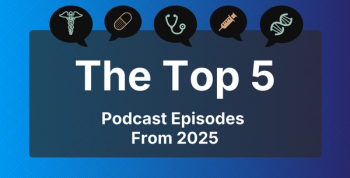
Transitioning Adolescents With Lupus From Pediatric to Adult Care
Transferring from pediatric to adult care can result in difficulties for patients with childhood-onset systemic lupus erythematosus.
As adolescents with childhood-onset systemic lupus erythematosus (cSLE) age, they transfer from pediatric care to adult care, which can result in difficulties. After transferring care, patients with cSLE have lower health care utilization, although disease activity was similar to that of patients with cSLE who hadn’t yet transferred care, according to a
With advances in treatment, the 10-year survival rate in adolescents with cSLE has reached 94% to 100%. As a result, “the majority of cSLE patients will reach adulthood and thus ultimately need to transfer their care from pediatric to adult providers,” the authors explained.
The researchers included 85 patients from the Pediatric Lupus Outcomes Study, a prospective longitudinal cohort study of young adults between the ages of 18 and 30 years with cSLE. The analysis compared 47 patients who were still being treated by pediatric rheumatologists with 38 patients who had transferred to adult care.
Current disease activity, cumulative disease manifestations, health-related quality of life, and health care utilization were measured, and participants answered the Transition Readiness Assessment Questionnaire (TRAQ). Disease activity was measured using the Systemic Lupus Activity Questionnaire (SLAQ).
Between the pre- and posttransfer groups, there was no difference regarding age at diagnosis and no significant difference in SLAQ scores or incidence of disease flare in the past 3 months. There were differences in medication use, with the pretransfer group more likely to be taking hydroxychloroquine (89.1% vs 63.2%), steroids (76.6% vs 18.4%), and disease-modifying antirheumatic drugs (70.2% vs 31.6%).
Patients in the pretransfer group were more likely to have a rheumatologist as their primary physician for SLE management compared with the posttransfer group (100% vs 73.7%). Patients in the pretransfer group were also more likely to have seen a rheumatologist in the past year (93.6% vs 68.4%). However, there were no differences in rates of emergency department visits, hospitalizations, and intensive care unit admissions.
The total TRAQ score (1-5 range) was similar between the 2 groups (4.4 pretransfer and 4.8 posttransfer). However, 9 (23.7%) patients in the posttransfer group reported problems with the transfer process, including the inability to find an adult provider (5.9%), inability to obtain insurance (1.0%), and other issues (8.2%) that included forgetfulness, not knowing who to call, and poor hand off.
“Although transition readiness scores were high for both groups and significantly higher for some metrics in the post-transfer group, several of our participants reported difficulties with transition that they feel contributed directly to increased disease activity,” the authors concluded. “Understanding how transfer may lead to decreased health-care utilization will help us to counsel and guide patients better through the transition process.”
References
Haro SL, Lawson EF, Hersh AO. Disease activity and health-care utilization among young adults with childhood-onset lupus transitioning to adult care: data from the Pediatric Lupus Outcomes Study. Lupus. Published online July 8, 2020. doi:10.1177/0961203320938868
Newsletter
Stay ahead of policy, cost, and value—subscribe to AJMC for expert insights at the intersection of clinical care and health economics.








































